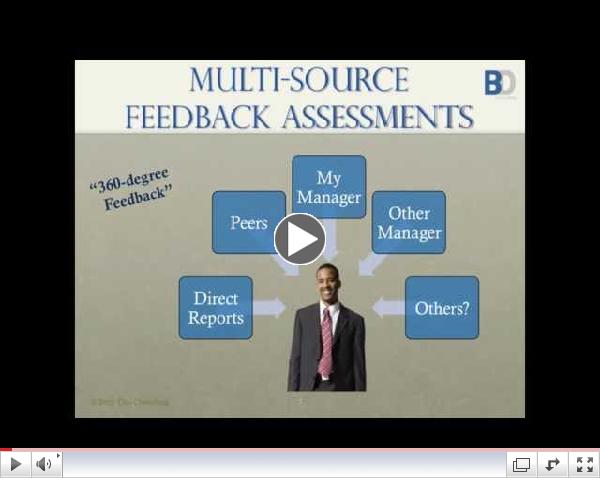A few resources
on 360s
There are many articles, books and online resources on 360s. These are a few you might find helpful. Atwater, L.E., Brett, J.F. and Charles, A.C. (2007). Multisource feedback: lessons learned and implications for practice. Human Resource Management, (46) 2, 285-307.
A review of the research literature on 360s as well as a description of their own 3 year study of a 360 implementation in 2 companies.__________________________
Lepsinger, R. and Lucia, A.D. (1997). Art and Science of 360 Feedback. San Francisco: Josey-Bass.
Though a little dated, this is a practice-oriented book that provides a good overview for conducting 360s.
__________________________Nowack, K.M and Mashihi, S. (2012). Evidence-based answers to 15 questions about leveraging 360-degree feedback. Consulting Psychology Journal: Practice and Research, (64) 3, 157-182. This article is a good recent review of the research on 360s with implications for practice. It is available online along with additional research by the authors at: http://www.envisialearning.com/360_degree_feedback/articles_________________________ Toegel, G. and Conger, J.A. (2003). 360-degree assessment: Time for reinvention. Center for Effective Organizations (CEO). This article reviews issues related to using 360s for development vs. performance appraisal, suggesting the need for 2 separate types of assessments; an interesting perspective. It is available online at: 360-Degree Assessment: Time for Reinvention  Our leadership development firm is a referral-based business. Feel free to pass along our contact info or forward this email to anyone you think would benefit. Thanks! |
|
Greetings!
360 Feedback Assessments, also known as Multi-source or Multi-rater assessments, are currently hot items. Like many Leadership Consultants, I provide 360 feedback for coaching or as a stand-alone service. My clients find significant value in these tools, which is why I use them. I recognize, however, that there are significant issues to address before implementing a 360 process. This newsletter takes a look at this timely topic and provides some resources for further review. I hope you find it helpful. Betty
|
|
Benefits & Concerns when implementing 360 degree feedback
 | | 360 Feedback.mp4 |
This 10 minute video presentation is a high level overview of some of the benefits of using 360 degree assessments as well as potential risks and issues to consider when implementing this type of intervention.
|
Two Case Studies
- Garbage In---> Garbage Out
The company is excited to be trying out the new management tool recommended by a colleague. There has been much turnover in the company, and a high level of mistrust. The project sponsors think this will help reveal problems that can be addressed. Rather hastily, a 360 is delivered across the organization. In one department, the executive receiving the feedback is clearly able to identify individuals' comments. The executive is delighted to learn that her direct reports, whom she was concerned had problems with her management style, actually gave her exceedingly high marks. She then presents this report to her boss to demonstrate the excellent job she is doing. In reality, her direct reports were terrified of her and gave misleading answers because they feared retaliation. A high performing leader, with a tendency toward perfection, was causing distress at work and his coworkers were hesitant to give him this feedback. He enlisted a coach who suggested a 360 assessment. Eager to improve, he engaged in this new assessment process and was surprised to learn about the negative perceptions others had of him. With the help of his coach and a good development plan, he enlisted his core strength as a high performer and addressed these interpersonal issues, causing his coworkers to later remark,"Wow, what has happened to John? He is so much more cooperative; much easier to work with". The feedback helped him identify and address critical blind spots, enabling him to improve relationships with his coworkers, which in turn helped him to be a more effective leader. These 2 cases demonstrate that 360s can be used to enhance leadership development or as a potential obstacle to a leader's success. It's always important to thoroughly consider the implications of an intervention, including unintentional consequences, when delivering any assessment that involves sensitive information.
|
The "BLT" ..... Betty's Leadership Tip
(suitable for vegetarians)
360s provide rich and confidential information that can be helpful. But one can also gain significant value from informal feedback requests. Think about people in your company whose opinions you value and trust. (This is very important!). Ask for feedback. Check in with them from time to time, for thoughts on how you can improve your performance. Especially useful is "just-in-time" feedback, in the moment, like in a situation in which you have some questions about your behavior. You may be surprised at how valuable this simple exercise can be. Feedback can be seen as a gift and can open us up to new levels of performance.
|
|
|
|
|